Makers 1-on-1 is our original interview series featuring today's makers and DIYers. We're sitting down with new makers every week to learn more about their projects, how they acquire information, their purchase processes, and their passions.
 This week, we’re interviewing Anthony and Mary Galewood, the woodworking team behind Erie Trade Company. Together, this husband and wife team design original and custom wooden signage and home decor that incorporates family names and hometown pride. In their process, they use woodworking machines and tools, a variety of wood stains and paints, and even some hand tools for stylistic flair. In your brand sells to woodworkers, this 1-on-1 interview with Anthony and Mary will give you some important insights for connecting with makers like them.
This week, we’re interviewing Anthony and Mary Galewood, the woodworking team behind Erie Trade Company. Together, this husband and wife team design original and custom wooden signage and home decor that incorporates family names and hometown pride. In their process, they use woodworking machines and tools, a variety of wood stains and paints, and even some hand tools for stylistic flair. In your brand sells to woodworkers, this 1-on-1 interview with Anthony and Mary will give you some important insights for connecting with makers like them.
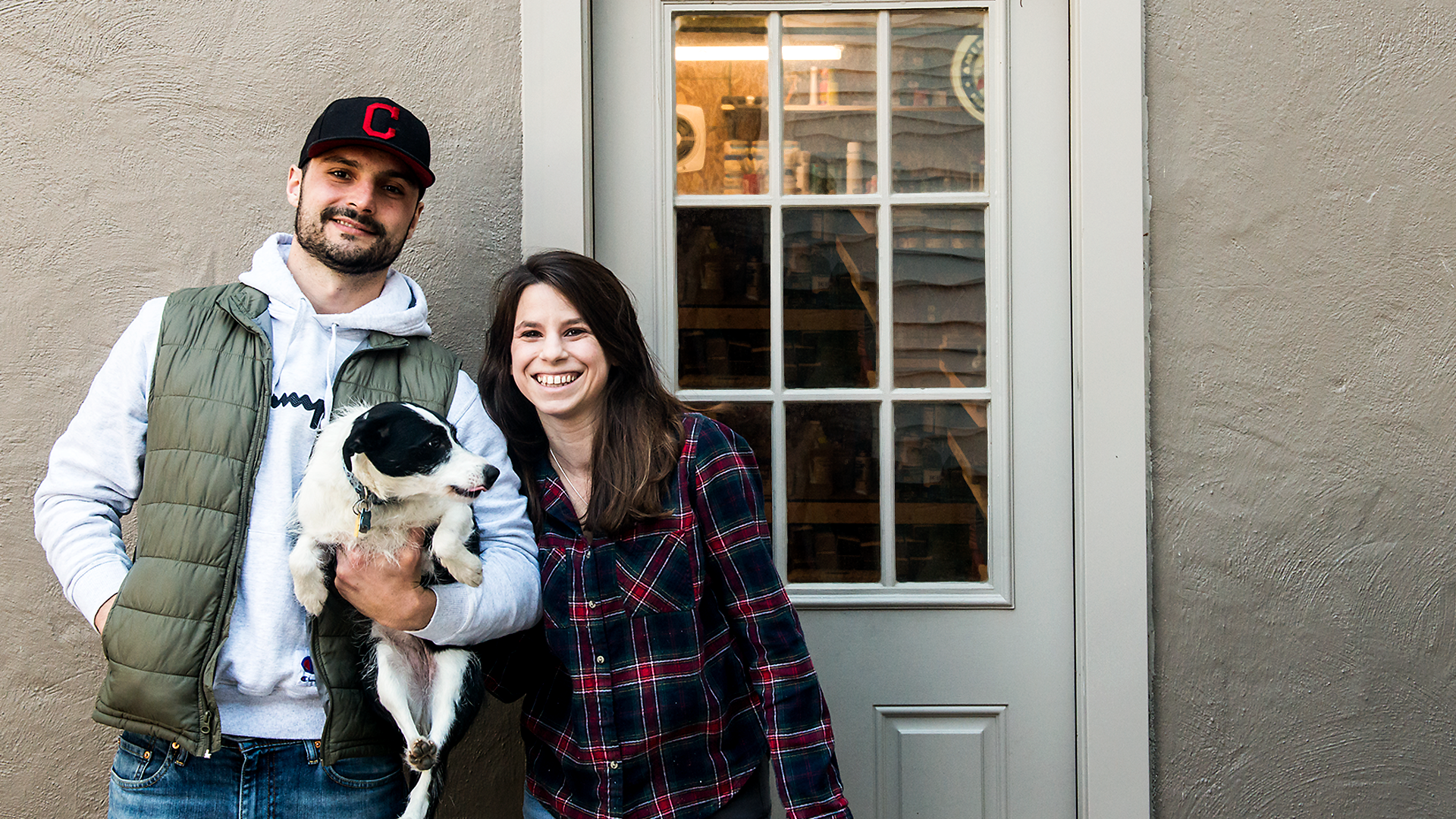
Who are you and what do you do?
Anthony (A): I’m Anthony and this is my wife, Mary, and at our company, Erie Trade Company, we do anything woodwork related. We have a machine for signage; that’s a big thing we do. We also do bar top installations. Anything woodwork related, we’ll usually take on.
How did you get started woodworking? How did it turn into such a big part of your lives?
A: I started making stuff with hand chisels. I’ve always liked woodworking and carpentry; my grandfather was a woodworker and taught me from a young age. So I decided I’d like to get something more automated than the hand carvings so we could potentially start a business, so we got our signage machine and ran with it.
Mary (M): I like the design element so I was comfortable jumping in to design using Illustrator or PowerPoint, a lot like what I do at work during the day. We both like being creative. Our pie in the sky would be to open up our own little shop on Kelley’s Island or in Cleveland somewhere.
What does the process look like to get from an idea to a finished custom piece?
M: So for one project, a woman requested a custom piece as a gift for her brother’s wedding. I always try to incorporate a story to make the piece special, so I start a conversation to really understand the project first. I suggested putting their last name with year established, which could be a stock piece on our website. But then on the back, we added the latitude and longitude of where they met, and he was wrestler, so it says, “A match made in Michigan,” where they went to school. We used their story to come up with the concept for her piece. Then we sent her a proof of the design. That’s important to us because we don’t want to miss the mark of the concept they had in their head. Once they sign off on that Anthony comes in to prep.
A: Then I find the best lumber for the particular piece; they’re all different. Depending on what kind of wood they want, I might have a rectangle in stock or I can also use live edge, which is pretty popular. So I go to my resources for wood and pick out the best one for the project. Then there’s a lot of sanding, staining, painting, and carving.
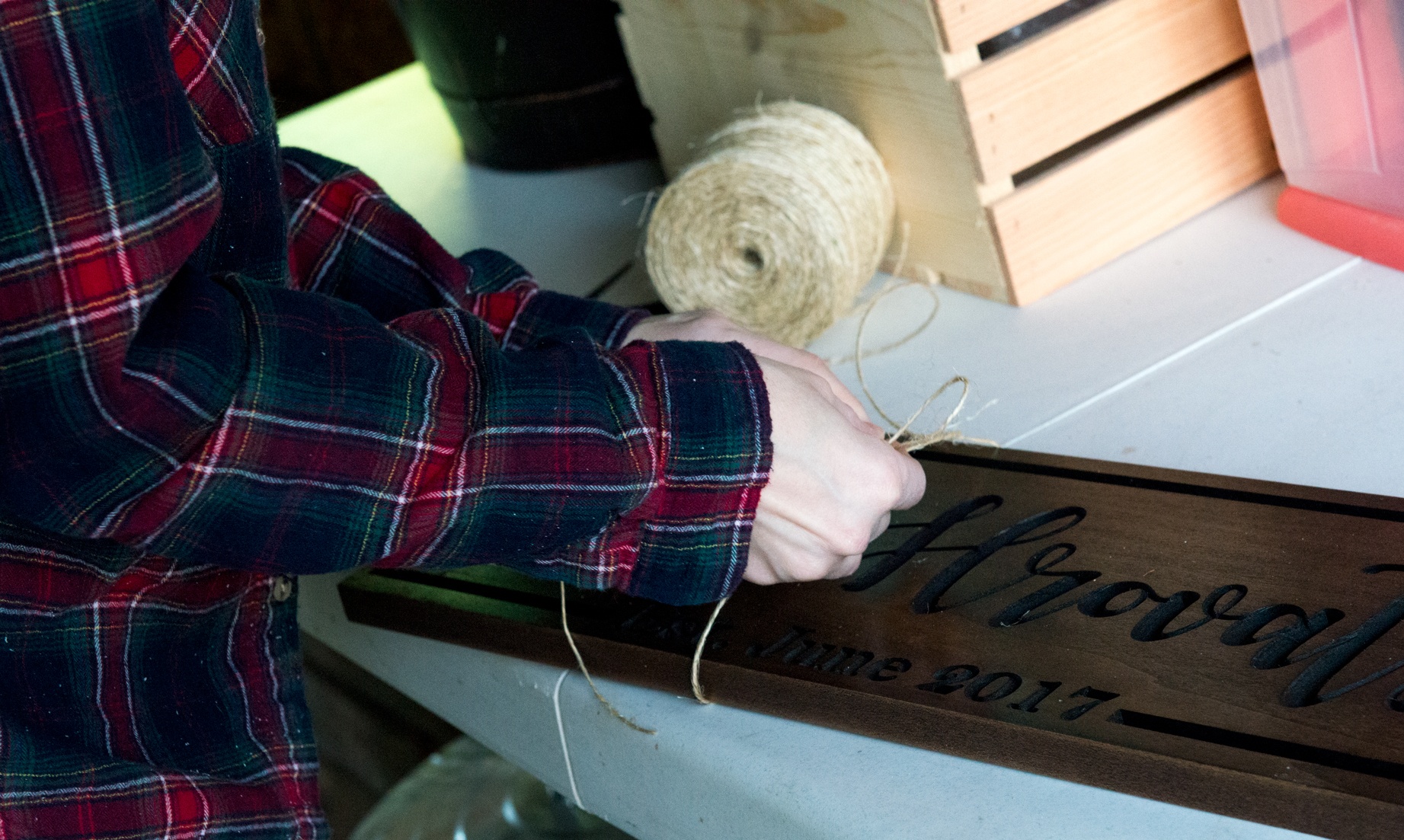
What other materials do you use when you're woodworking?
M: We really like Minwax stains, and we’ve done research on them to make sure they’re eco-friendly, and follow all the requirements like being LEED approved, and we also love that they also offer a lot of colors. I’m worried that we might run into issues being creative when we need to find a line of stains with cool colors, but Minwax balances it out right now and that’s why we’ve stuck with them.
A: Finding the wood is a big thing too. I’ve got some pretty good relationships with a few different mills. Last month I drove like two and a half hours to southern Ohio to get a specific piece of wood. The normal process is a lot of back and forth, sending pictures of the wood and landing on one.
What's important for you in a product that goes into one of your pieces?
A: Quality is most important to us. For us, we try to use everything as American-made as possible. We think that’s a good indicator of quality.
M: For stains and paint, we feel comfortable sticking to American-made because they meet those eco requirements with VOCs.
A: I always use American hardwood because I know it’s going to last, it’s going to stand up to the elements. I trust that I seal everything really well with the sealing products I use.
M: For us, I think quality means that something is going to last. The way we apply the stain is important, so we like Minwax because it goes on nicely. We had to make sure it dries because if you carve into something and it’s not dry, no matter what stain you’re using, it’s going to bleed when you carve. You have to know how to use any product, but we’ve gone through trial and error to find what we like best and how to use it.
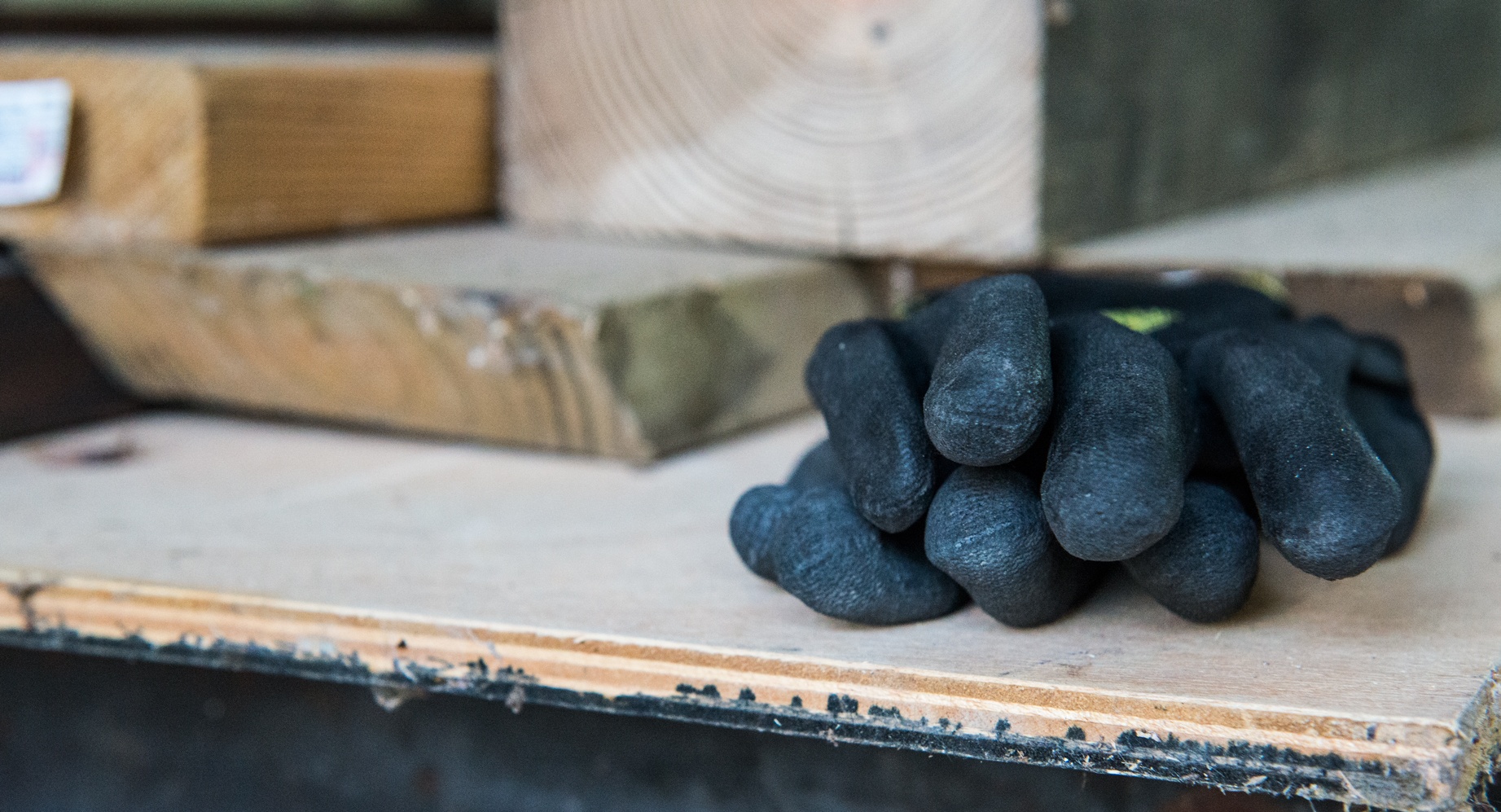
What kind of research helps you make the best pieces you can?
M: For example, I did some research a few months back trying to find the best acrylic for wood, and what I found was that different brands are better for mixed usage as opposed to just painting on canvas, so we picked one that had good reviews all around. We didn’t think about these things before we started a business, but then we started to worry that we weren’t using the best products that we could be, and we wanted to know if other people who are doing what we’re doing are using certain things instead of others. When you Google something, you know how it is, you can almost get overwhelmed with all the things you can read, but sorting through the good sources is something I want to get into this year.
What social media platforms do you use?
M: Facebook, Etsy, and Instagram. I started using Hootsuite, which is cool because I can do the same posts on everything at the same time. I’m glad I have it because I think it’ll force me to go on Instagram more. We’re starting to pick up with Facebook and I’m working on some content pieces for us.
How do you deal with challenges that come up?
M: We try not to let even the big projects become work. We want to keep it fun. We’ve learned that when you’re at the point of getting frustrated or upset, just to leave and take a break at that point because it’s not worth losing the fun element. You come back tomorrow, and it usually works out.
When our machine broke in December, it was a hard day. We had stuff we needed to get out. It’s an American made machine, but some of the parts come from overseas. It turned out to be a small fix. We called the company and they sent us out a free piece to fix it because we hadn’t even had the machine a year. The company was so cool about it and that meant a lot to us as DIYers with a tighter budget and schedule. Being able to get a hold of someone at the company to help us made a huge difference to us and made me happy that we were using their product.
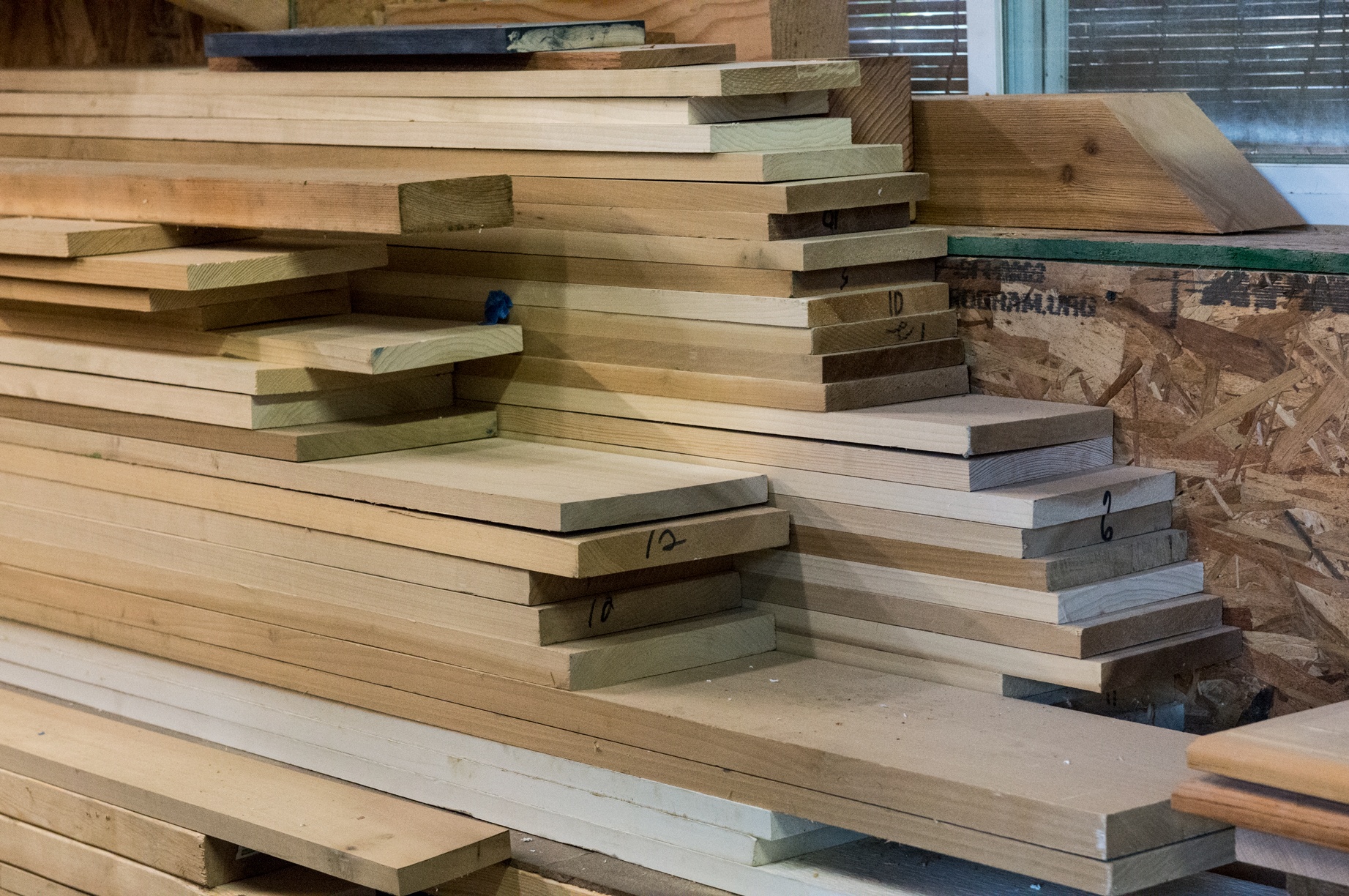
What motivates you to keep woodworking? Is it more challenging or relaxing to do something creative?
M: For me, it’s to overcome a challenge. I love the feeling of achieving something. It’s definitely some of both, though. I’ve always been in corporate America, so it’s an outlet in a sense that I’m doing it and I’m in control.
A: For me, I like thinking about what this project could be. It might mean a bigger shop or a bigger scale, hopefully becoming full-time. That’s what motivates me to get better. When I get off work, instead of just plopping down and watching TV, I get to go do something I like doing. Some days I still plop down and watch TV, but this is always here.
M: I also love how much I’m learning and how it’s impacting my other job. Marketing our small business, for me, is a lot like how I approach my other job and vice versa. It’s cohesive and works together, and it’s helping me push myself and inspiring me in my other job not to get in a rut and to keep thinking.
Where else do you find inspiration for your pieces?
A: We do a lot of stuff focused around the islands up on Lake Erie. Mary’s grandparents own property up there so we sold on Kelley’s Island last summer. We’re going to try and do a lot more up there.
M: We did really well on the island so we’re learning that because we’re inspired by it, those pieces are really fun for us. A lot of the paints and stains we use are available in fun colors like aquas and blues to fit the beach vibe. That’s a main piece of our work. Then, he likes sports on the Cleveland end, as well as a more industrial vibe, so we have a mix of things.
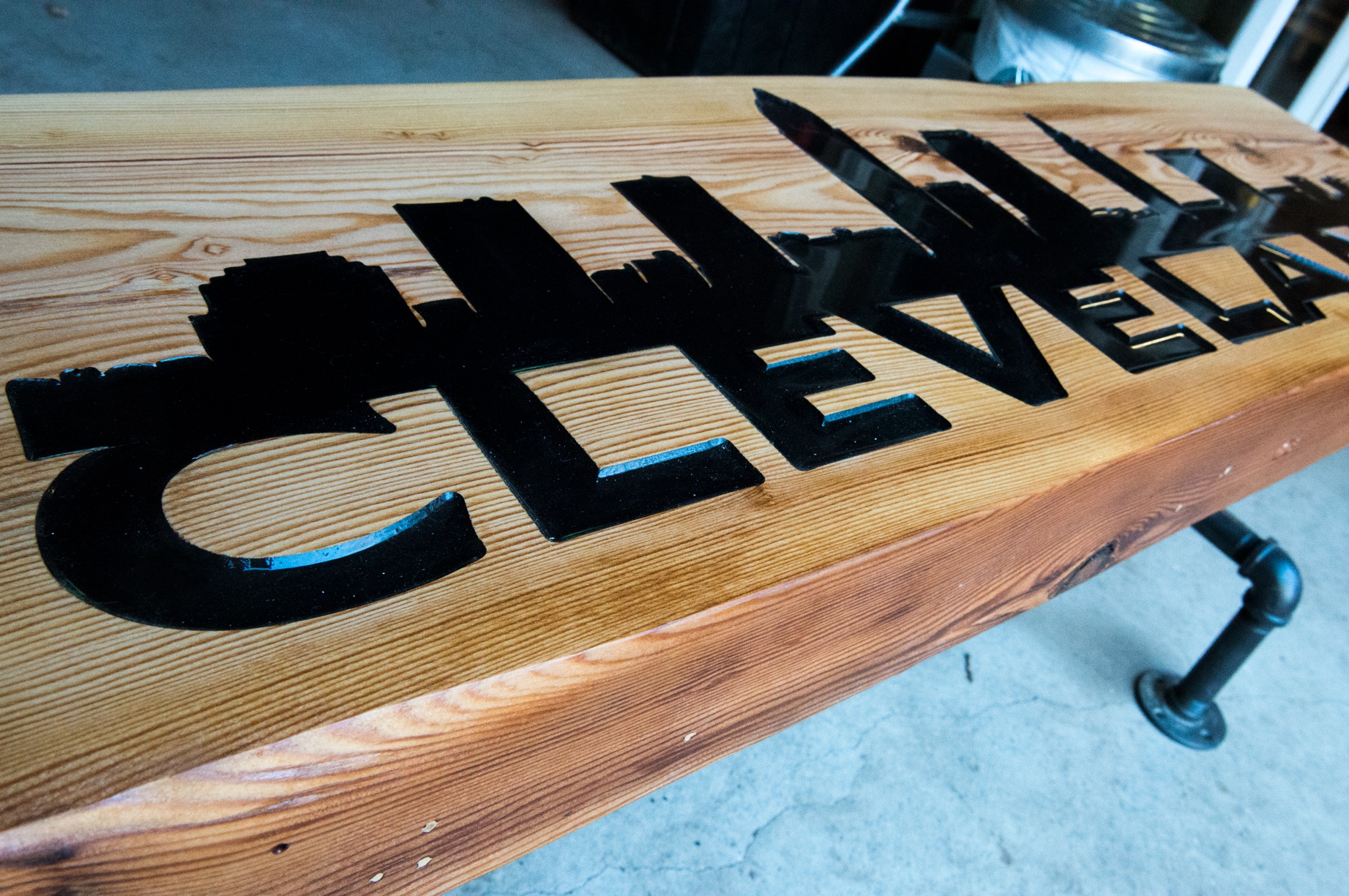
What's the most rewarding part of what you're doing?
A: I would say the satisfied customer at the end. When I installed that bar top, the guy and his wife were so happy with it. It’s rewarding to know that it’s part of their home and it’s going to be there even if they ever move out. I feel a sense of achievement in that way.
M: For me, making stuff for people is why we got started. That first thing Anthony carved was an island piece for my grandpa, and I try to approach all the pieces like that. That’s why I married him, because he’s such a caring person, and I think we want people to feel that kindness when people are getting something. And I love making our things unique, even with the packaging. Keeping in the handmade feel is important to us. I think seeing people happy is really the outcome we’re proud of.




